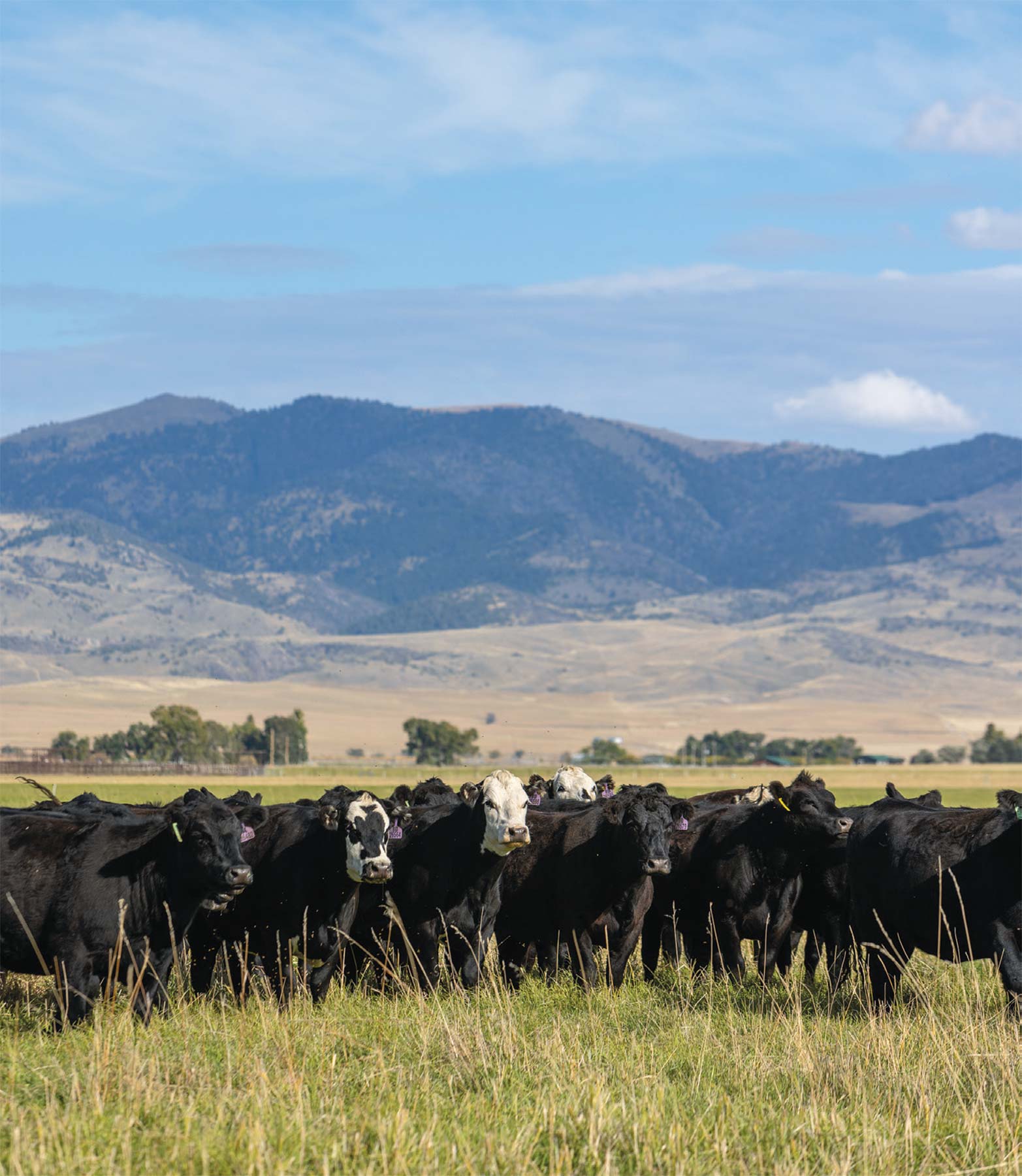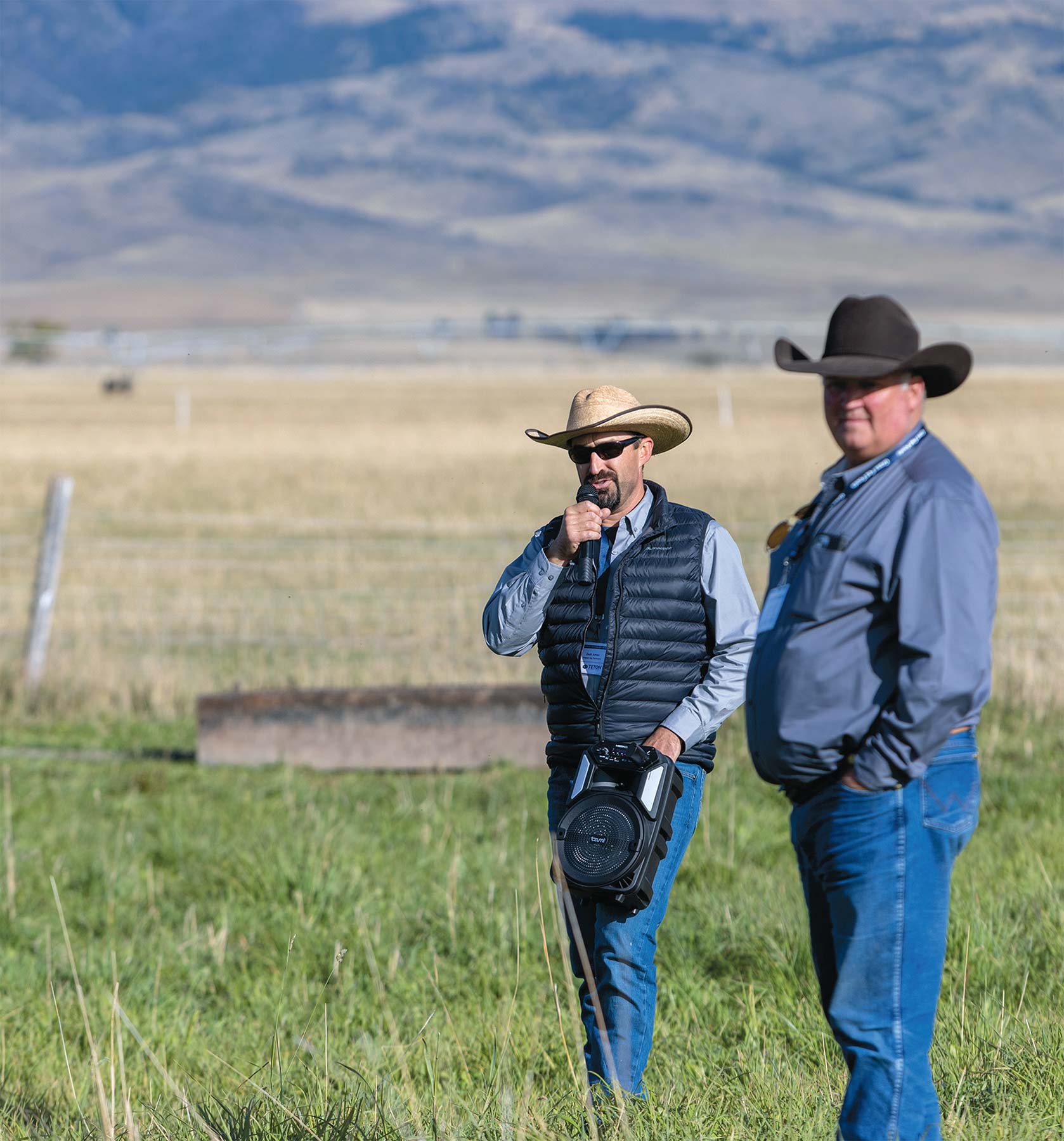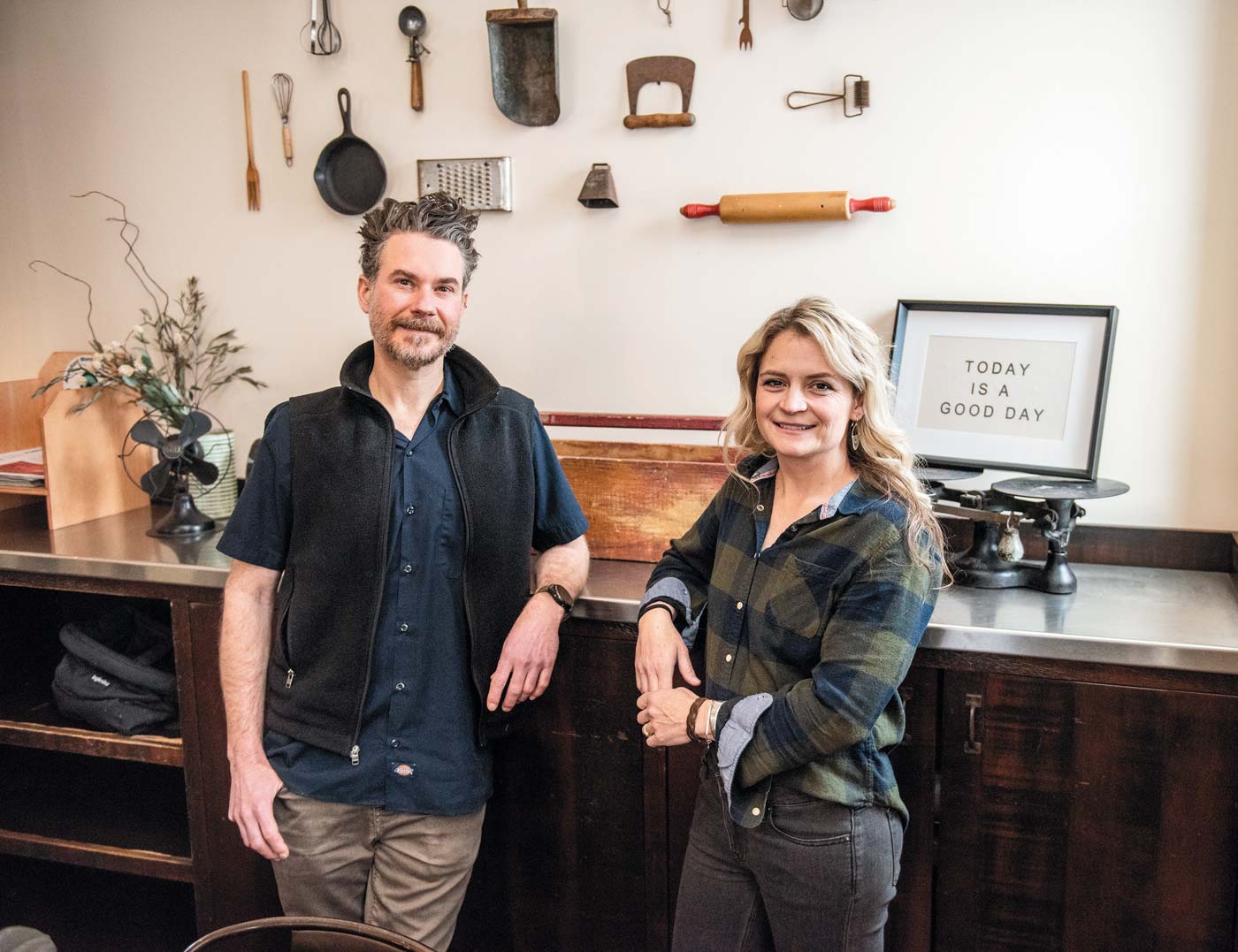Montana’s Matador Ranch Partners with Grass Fed Foods
In an irrigated field framed by the gentle rise of Montana’s Blacktail Mountains and the life-giving waters of the Beaverhead Valley, turnips and radishes grow among kale and collard greens. Warm- and cool-season grasses shoot their emerald blades toward the sun, accepting light and carbon dioxide that nourishes vegetative growth as well as root development in the soil. Diverse, lush, and gloriously green, this pasture will feed a herd of cattle as the animals move through a grazing rotation on Matador Ranch, one of several regenerative ranches raising beef for Grass Fed Foods, the nation’s largest grass-fed beef platform.
Matador Ranch is a merger of former Beaverhead and Selkirk ranches near Dillon, Montana, and spans 402,148 acres nestled in the southwestern part of the state. Committed to a sustainable ranching model that prioritizes soil heath, Matador has about 15,200 cattle that are managed based on needs: Mother cows and calves are turned out in the Blacktail foothills where they may forage for an array of native plants; mature animals are finished on diversely planted irrigated pastures; pregnant cows are overwintered on sub-irrigated fields with carefully reserved grassbanks and high-quality hay. This is an archetype of regeneratively raising grass-fed beef. In summer, cows and calves turned out on the range are tended by cowboys living with their families in seasonal camps scattered along a 70-mile route that ends at the Montana-Idaho border.
Meanwhile, steers and heifers that have reached a finishing age are rotated in tight bunches on pastures irrigated by a gravity-fed, warm-spring water system that fosters growth of dense plant stands from early spring to late fall.
This model creates quality beef as well as healthy ecosystems. Recognized in 2022 and 2023 by the Wildlife Habitat Council for its ecological stewardship, Matador encompasses open, working landscapes that provide habitats for wildlife including pronghorn, moose, grizzly bears, bluebirds, and sage grouse.
“There’s an appropriate time for everything, and we think the time for grass-fed beef is now,” says Jeff Tripician, president and CEO of Grass Fed Foods, during the inaugural Grass Fed Beef Summit held at Matador last September. Citing concerns like childhood obesity, the litany of maladies plaguing the elderly, and the overall health of the planet, Tripician recognizes that society faces many challenges. But then he mentions his grandson—a 5-month-old stand-in for the next generation, whose future we are shaping today. “What are we doing, and what are we doing it for? Let’s have grass-fed beef become a solution.”
Beneath the autumnal sun and a bluebird sky, Lora Soderquist, ecologist and natural capital project developer with Impact Ag Partners, an international agricultural asset management firm, gestures toward the ground. She is one of several managers guiding a tour of Matador Ranch as part of the Grass Fed Beef Summit. Her feet are planted among trampled grasses and forbs in a cross-section of a pasture where a group of cattle is nearing finishing weight. The steers are moved into a new section of the field every 24 hours—munching leaves, trampling stems, and depositing manure along the way.
“The foundation is below our feet; it’s the soil this grass is growing on,” Soderquist says. “One teaspoon of soil has more microorganisms than there are people in the world.”
By embracing regenerative ranching practices that minimize bare ground and prioritize leafy vegetative growth, Matador is creating healthy soil that grows nutritious plants that feed happy cattle. With frequent rotations, the pasture isn’t overgrazed. A healthy stand of plants combats weeds; root vegetables like turnips and radishes return carbon to the soil and feed microorganisms; trampled leaves and bent stems armor the soil surface, moderating soil temperatures and keeping it from drying out. This all comes together to grow nutrient-dense plants in a system that continues to improve and take care of itself.


“When we have cattle that are happy, grazing highly nutritious feed, that turns into highly nutritious beef,” Soderquist says.
A livestock operation run by two dozen employees and a team from Impact Ag Partners, Matador is producing beef at scale and supplying it to Grass Fed Foods. Grass Fed Foods in turn supplies grass-fed beef products to grocery stores and food service customers across the U.S. From steaks and patties to hot dogs and meatballs, their beef is showing up on an array of menus and is driven by the company’s commitment to better, healthier beef.
“Agriculture has always been in a point of transition, but we’re really in a point of transition right now,” Zach Jones tells industry partners after the Matador Ranch tour. Senior vice president of Impact Ag Partners who assists with management at Matador, Jones expresses pride in the work he is a part of. “We know that commodity markets are the backbone of agriculture,” he says. “We’re not going to disparage that, but we know that a greater future is a focus on premium food and fiber production.”
In line with the company’s mission to deliver high-quality beef, Matador’s team is developing a series of initiatives that will broaden understanding of ranch management. In 2023, through a partnership with the University of California at Davis, Matador became the world’s first onpasture site for research on the microalgae Asparagopsis and its impact on the amount of methane cattle produce. Last summer, researchers gave a group of cattle a pellet form of Asparagopsis as a dietary supplement in addition to their regular grass rotations, all the while monitoring their methane production. Research is ongoing, but the scientists are hopeful they will learn more about the impacts of feed in terms of methane production by cattle and related climate implications.
Matador also is in the process of conducting three separate carbon studies to learn how managed grazing is affecting carbon sequestration in the soil. As cattle move through their rotation, their munching, trampling, and manure deposits promote plant growth and decomposition of organic matter, which, in turn, allows the soil to hold even more carbon. The plants transfer the carbon from the atmosphere to the dirt. These studies are a part of the Ecological Outcome Verification protocol, an approach to objectively evaluating the impacts of a ranching operation’s management on the overall ecosystem.
“As a group, together, and as a ranch—in this storm of climate challenge, social challenge, economic challenge, nutritional challenge—we can either continue to walk away from it … or we can face that challenge and walk toward it,” Jones says. “We can face the adversity, go toward it, and make a difference.”




